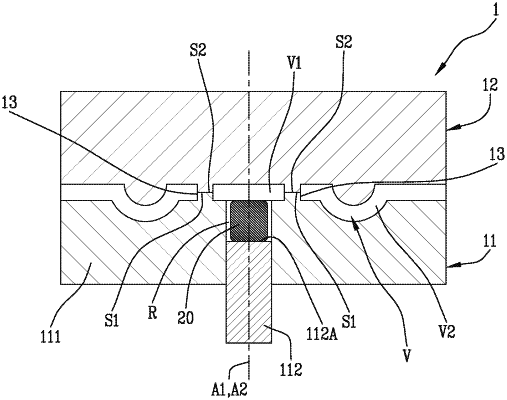| CPC B29C 43/361 (2013.01) [B29C 43/08 (2013.01); B29C 43/58 (2013.01); B29C 2043/5808 (2013.01); B29K 2101/12 (2013.01); B29K 2309/08 (2013.01); B29L 2031/565 (2013.01)] | 7 Claims |

|
1. A mould for making an object from plastic material, the object having a wall and a through hole formed in the wall, the mould comprising:
a first half mould, including a body and a plunger, the plunger being movable relative to the body between a retracted position, where it acts in conjunction with the body to form a recess for receiving all or part of an extruded dose of plastic material, and an advanced position, where it at least partly occupies the recess;
a second half mould, wherein the first and the second half mould are mutually movable along a longitudinal axis between an open position of the mould, to allow extracting the object from the mould, and a closed position of the mould, where they delimit a closed moulding space, the recess being open onto the moulding space;
a thrust actuator, connected to the plunger to move it from the retracted position to the advanced position, thereby squeezing the dose so that the plastic material is forced to occupy the moulding space,
wherein the first and the second half mould include a first and a second contact surface, respectively, the first and the second contact surface being, when the mould is at the closed position, abutted against each other so that the mould forms an interrupting column, which is surrounded by the moulding space, to form the through hole in the wall of the object,
wherein the first and the second half mould are shaped in such a way that the moulding space comprises a central zone, aligned with the longitudinal axis and intended to form a sprue of the object to be moulded, and a plurality of peripheral zones and
wherein, when the mould is closed, an interrupting column is positioned between the central zone and each of the peripheral zones of the moulding space, the peripheral zones being located on the outside of the central zone and surrounding the central zone,
wherein the sprue extends in a transversal plane perpendicular to the longitudinal axis and each interrupting column is oriented parallel to the longitudinal axis.
|